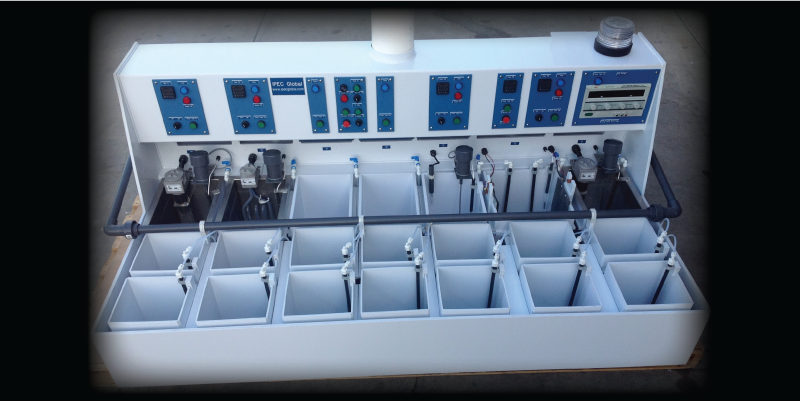Anodizing tanks require high strength to corrosion, resistance to high thermal properties, and uphold mechanical properties needed in anodizing. Most anodizing tanks are made from a polymer called polypropylene. Polypropylene is used also in other objects like laboratory equipment, ropes, and packing/labeling applications. Polypropylene has many characteristics that are useful to the anodizing industry. For example, the polymer at room temperature is resistant to fats and many organic solvents. Polypropylene also has a high melting point, that can reach 340°F. Polypropylene, like other plastics, can be manipulated to fabricate seamless tanks needed for anodizing tanks.
Anodizing tanks are usually .5- 1-inch-thick and have external reinforcements for added strength. Cooling a tank is not complicated. A cooling tower or chiller is used to circulate water. The water is pumped from a reservoir to an immersion coil in the tank, or a heat exchanger. In certain applications, like hard coat applications, a water/glycol mix is used. The mix can reach lower temperatures than water. For instance, in a 50% water/glycol solution heat capacity is decreased by 20%. This allows the mix to be a better heat transfer unit than pure water.

